
IN VITRO CELLULAR & DEVELOPMENTAL BIOLOGY-ANIMAL
Scope & Guideline
Elevating the Study of In Vitro Dynamics
Introduction
Aims and Scopes
- Cell Culture Techniques:
The journal emphasizes the development and optimization of in vitro cell culture techniques, including the establishment of primary and immortalized cell lines from various animal species. - Cellular Mechanisms and Signaling Pathways:
Research articles often explore cellular mechanisms, particularly signaling pathways involved in cellular processes such as differentiation, proliferation, and apoptosis. - Application of Stem Cells:
A significant focus is on the use of stem cells, including induced pluripotent stem cells (iPSCs) and mesenchymal stem cells (MSCs), for regenerative medicine and therapeutic applications. - Toxicology and Environmental Impact Studies:
The journal publishes studies assessing the effects of environmental toxins on cellular systems, highlighting the relevance of in vitro models in toxicology. - Cancer Biology and Therapeutics:
There is a strong emphasis on cancer research, including the study of tumor microenvironments and the development of novel therapeutic strategies using in vitro models. - Biotechnology and Genetic Engineering:
The journal supports research on biotechnological applications, including gene editing technologies like CRISPR/Cas9 in animal cells, and their implications for agriculture and medicine.
Trending and Emerging
- 3D Cell Culture Models:
There is a notable increase in studies utilizing 3D cell culture models, reflecting a trend towards more physiologically relevant systems that better simulate in vivo environments and cellular interactions. - Organoid Technology:
Research on organoid models is on the rise, showcasing their potential for studying organ-specific functions, disease modeling, and drug testing, thus bridging the gap between in vitro and in vivo studies. - CRISPR and Gene Editing Applications:
The application of CRISPR technology for gene editing in various cell types is gaining momentum, as researchers explore its potential for therapeutic interventions and functional studies. - Cellular Responses to Environmental Stressors:
Emerging themes include the investigation of cellular responses to environmental stressors, such as hypoxia and oxidative stress, highlighting the importance of understanding these interactions in health and disease. - Stem Cell Differentiation and Therapeutics:
There is an increasing focus on the differentiation of stem cells into specific lineages for therapeutic applications, emphasizing the potential of regenerative medicine.
Declining or Waning
- Traditional Toxicology Studies:
Research focusing solely on traditional toxicological assessments without integrating modern in vitro techniques appears to be decreasing, as there is a shift towards more complex models that better mimic in vivo conditions. - Basic Cellular Physiology Studies:
Studies that merely describe basic cellular physiology without applying advanced technologies or addressing translational aspects are becoming less common, as researchers increasingly seek to connect their findings to practical applications. - Non-Mammalian Cell Lines:
The use of non-mammalian cell lines in studies has seen a decline, possibly due to a growing emphasis on mammalian systems that more closely resemble human biology and disease.
Similar Journals
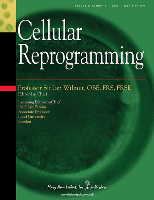
Cellular Reprogramming
Exploring New Frontiers in Stem Cell ResearchCellular Reprogramming is a prominent academic journal published by MARY ANN LIEBERT, INC, dedicated to advancing the field of cellular biology and biotechnology. With its ISSN 2152-4971 and E-ISSN 2152-4998, this journal provides an innovative platform for researchers and professionals to share groundbreaking research findings on cellular reprogramming, stem cell biology, and regenerative medicine. Established in 2010, and actively publishing until 2024, the journal is recognized for its contributions, evidenced by its categorizations in the Q3 and Q4 quartiles across several related fields, including biotechnology and developmental biology. This peer-reviewed journal not only supports open access to scientific literature but also aims to enhance interdisciplinary collaboration among scientists. With a growing impact in the realms of biochemistry, genetics, and molecular biology, Cellular Reprogramming remains an essential resource for the dissemination of pioneering research that could shape the future of cellular therapies.

Stem Cells International
Exploring Breakthroughs in Stem Cell TechnologyStem Cells International is a premier open access journal published by HINDAWI LTD, focusing on the rapidly evolving field of stem cell research. With an ISSN of 1687-966X and E-ISSN 1687-9678, this journal has been a vital resource since its inception in 2010, showcasing innovative studies and breakthroughs up to 2024. Positioned in Q3 in Cell Biology and Q2 in Molecular Biology for 2023, as well as well-ranked in the Scopus database, the journal serves as an essential platform for researchers, professionals, and students dedicated to exploring the implications of stem cell technology in regenerative medicine and biological research. The open access model ensures wide accessibility, fostering collaboration and knowledge-sharing across the scientific community, making it a cornerstone in advancing the understanding and application of stem cell science.
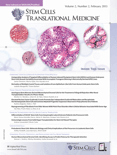
Stem Cells Translational Medicine
Leading the Charge in Stem Cell AdvancementsStem Cells Translational Medicine, published by Oxford University Press, is a leading open-access journal that has been at the forefront of stem cell research since its launch in 2012. With an impressive impact across various categories, it occupies Q2 in Cell Biology and is highly recognized in Q1 for both Developmental Biology and Miscellaneous Medicine in 2023. Its strong Scopus rankings highlight its significance in the fields of Biochemistry, Genetics, and Molecular Biology, achieving an outstanding percentile ranking of 93rd in Developmental Biology. The journal provides a pivotal platform for researchers, professionals, and students to publish and access cutting-edge findings that contribute to the understanding and application of stem cell technology. With a commitment to disseminating high-quality scientific knowledge, Stem Cells Translational Medicine plays a vital role in advancing research and innovation within the rapidly evolving landscape of regenerative medicine.

Cell Regeneration
Pioneering Insights into Cellular RenewalCell Regeneration, published by SPRINGERNATURE, stands at the forefront of biological research, focusing on the dynamic field of cellular development and regenerative biology. Since its establishment in 2012, this journal has embraced an Open Access model, facilitating widespread dissemination of key findings and fostering collaboration among researchers in the Netherlands and beyond. With an impact factor underscoring its significance, Cell Regeneration is positioned in the Q2 category in both Cell Biology and Developmental Biology as of 2023, ranked #32 out of 82 and #170 out of 285 in relevant Scopus peer fields. The journal encompasses a broad spectrum of research that advances our understanding of cellular processes, offering vital insights into regenerative mechanisms and their applications in therapies. This robust platform not only serves as a valuable resource for researchers, professionals, and students but also encourages scholarly dialogue and innovation in the fast-evolving landscape of cell biology.
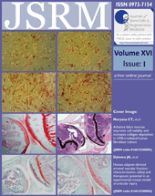
Journal of Stem Cells & Regenerative Medicine
Connecting Knowledge to Practice in Regenerative MedicineThe Journal of Stem Cells & Regenerative Medicine is a leading publication dedicated to the advancing field of stem cell research and regenerative medicine. Established in India and published by JOURNAL STEM CELLS & REGENERATIVE MEDICINE, this Open Access journal has been available since 2007, providing researchers and practitioners with free and unrestricted access to high-quality articles. With an ISSN of 0973-7154, the journal is indexed in Scopus, featuring a wide array of topics and insights into biochemistry, biotechnology, cell biology, and molecular biology, as denoted by its relevant quartile rankings. This journal is committed to bridging the gap between laboratory research and clinical applications, making significant contributions to the scientific community. The convergence of innovative studies from 2010 to 2024 positions it as an invaluable resource for those looking to stay at the forefront of stem cell and regenerative medicine research.

Russian Journal of Developmental Biology
Diving deep into the dynamics of development.The Russian Journal of Developmental Biology, published by PLEIADES PUBLISHING INC, serves as a significant platform for researchers and professionals engaged in the field of developmental biology. With the ISSN 1062-3604 and E-ISSN 1608-3326, this journal focused on intricate biological processes and dynamic developmental mechanisms from 2005 until 2017. Although its coverage is currently discontinued in Scopus, it remains notable for its contribution to understanding the pivotal roles of biochemistry and molecular genetics within the context of development. As a publication situated in the competitive quartiles of the field and boasting an influential Scopus rank of #77 out of #78, it has made a unique mark in developmental studies. Researchers and academics seeking to enhance their knowledge of historical advancements in the discipline will find the journal a valuable resource, even as it navigates the transition away from active publication.

Stem Cell Research & Therapy
Unlocking the Potential of Stem Cells for TomorrowStem Cell Research & Therapy is an esteemed international journal published by BMC, specializing in the rapidly advancing fields of stem cell research and regenerative therapies. Since its inception in 2010, the journal has embraced an Open Access model, ensuring that vital research is readily accessible to a global audience. With a significant impact in the scientific community, it holds Q1 quartile rankings in prestigious categories such as Biochemistry, Genetics and Molecular Biology, Cell Biology, and Molecular Medicine, highlighting its critical role in promoting groundbreaking research. The journal’s high Scopus rankings—placing it in the top echelons of its fields—reflect its commitment to publishing high-quality, peer-reviewed studies that advance our understanding of stem cell biology and therapeutic applications. Aimed at researchers, healthcare professionals, and students alike, Stem Cell Research & Therapy is an indispensable resource for those dedicated to the exploration and innovation within this transformative area of science.
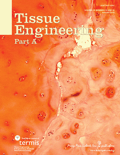
Tissue Engineering Part A
Pioneering the Path to Effective Therapeutic StrategiesTissue Engineering Part A is a prestigious peer-reviewed journal published by MARY ANN LIEBERT, INC that focuses on innovative research and advancements within the field of tissue engineering and regenerative medicine. Since its inception in 2008, this journal has played a critical role in disseminating cutting-edge findings that bridge the gap between laboratory research and clinical application, underscoring its significance in the scientific community. With a diverse scope encompassing biochemistry, bioengineering, biomaterials, and biomedical engineering, the journal ranks notably in the Scopus database, holding a Q2 quartile status across multiple categories, thus reflecting its high impact on ongoing research and professional practice. For researchers, professionals, and students, Tissue Engineering Part A serves as an invaluable resource, offering insights into the latest methodologies and breakthroughs that drive the future of healthcare and therapeutic strategies. While primarily a subscription-based journal, it ensures that vital research is accessible to a broad audience of scientists and engineers committed to advancing the life sciences.

CELLULAR & MOLECULAR BIOLOGY LETTERS
Transforming Knowledge in Biochemistry and Cell BiologyCELLULAR & MOLECULAR BIOLOGY LETTERS, published by BMC, is a premier open-access journal dedicated to disseminating high-quality research in the fields of Biochemistry, Cell Biology, and Molecular Biology. Established in 1996, the journal has emerged as a leader in its domain, boasting an impressive Q1 ranking across three critical categories as of 2023, reflecting its significant impact within the scientific community. With an ISSN of 1425-8153 and an E-ISSN of 1689-1392, it offers accessible research findings to a global audience, having been open access since 2013. Situated in the United Kingdom, at CAMPUS, 4 CRINAN ST, LONDON N1 9XW, the journal continues to serve as a vital resource for researchers, professionals, and students, contributing to advancements in the understanding of cellular and molecular processes. By providing a platform for original research, reviews, and short communications, CELLULAR & MOLECULAR BIOLOGY LETTERS plays a crucial role in fostering dialogue and collaboration within the scientific community.
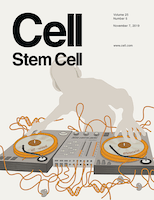
Cell Stem Cell
Fostering Global Collaboration in Cutting-Edge Stem Cell DiscoveriesCell Stem Cell, published by CELL PRESS, is a premier journal at the forefront of cellular biology, genetics, and molecular medicine. With an esteemed impact factor and recognized as a Q1 journal in multiple categories including Cell Biology, Genetics, and Molecular Medicine, it offers researchers, professionals, and students rigorous, peer-reviewed articles that shape the future of stem cell research and regenerative medicine. Located in Cambridge, MA, this journal has become an invaluable resource since its inception in 2007 and is committed to disseminating groundbreaking findings that drive innovation and understanding in these critical fields. By consistently ranking within the top percentile of its categories in Scopus, Cell Stem Cell remains an essential platform for scholarly communication, fostering collaboration among leading scientists worldwide. Although the journal does not currently offer open access options, its comprehensive insights are pivotal for anyone engaged in the study of stem cells and their applications.